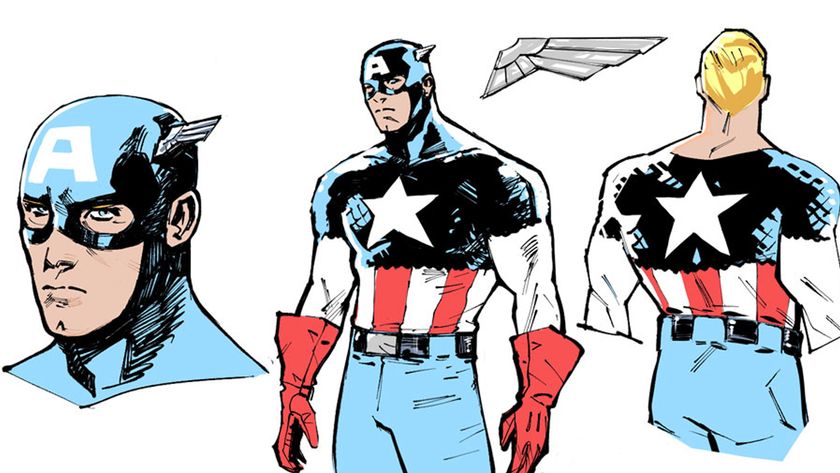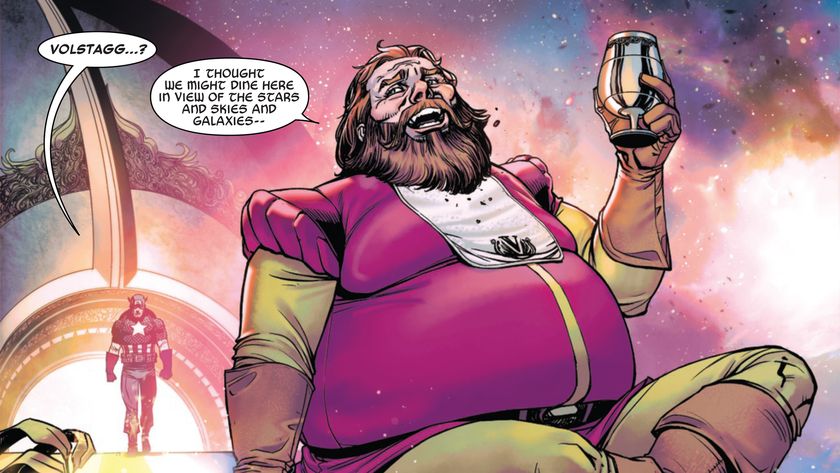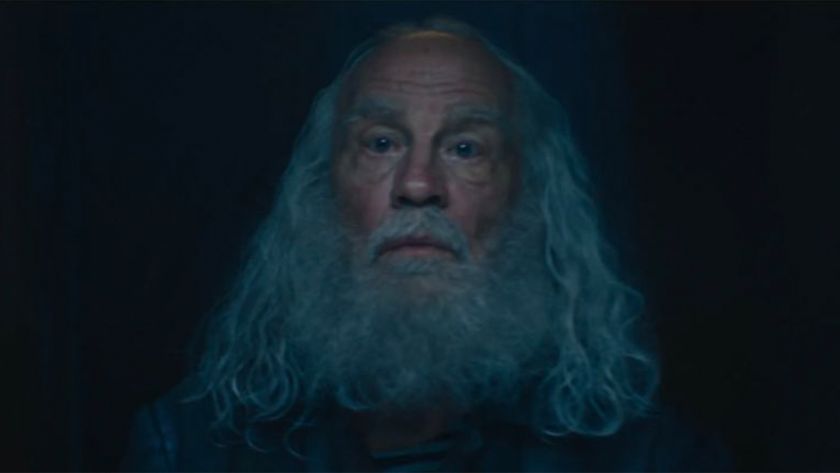Elephantmen returns for documentary-style new series inspired by Louis Theroux
Writer/creator Richard Starkings explains what's new - and what's been happening behind the scenes
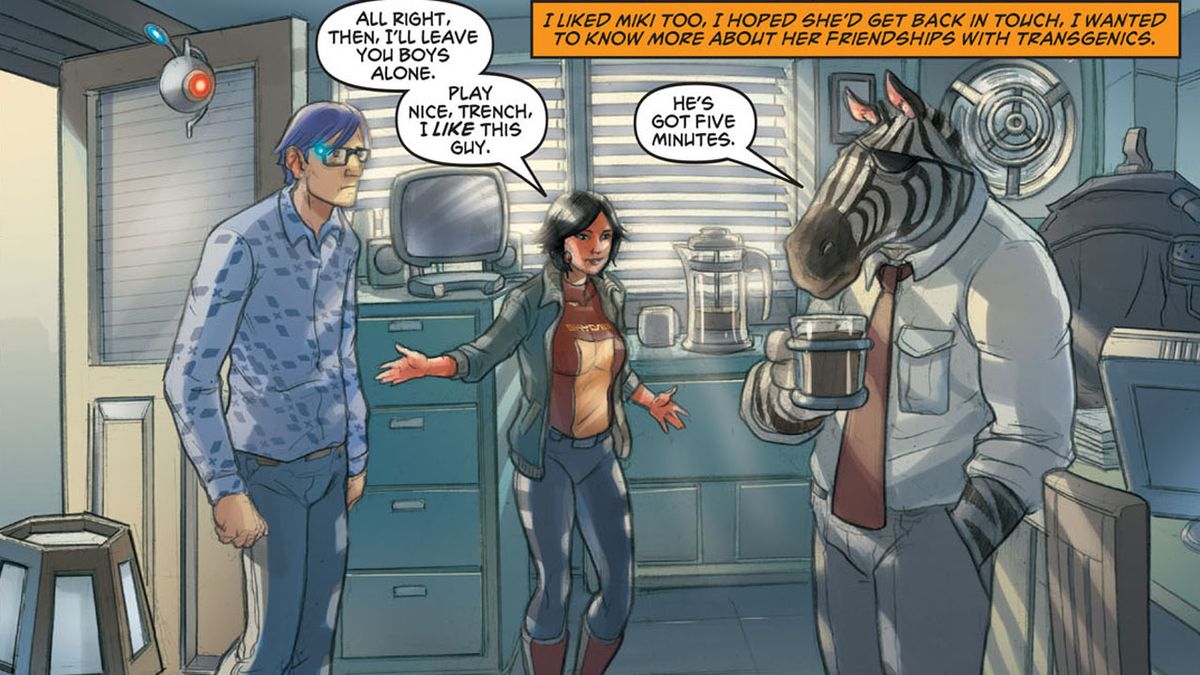
Richard Starkings' long-running anthropomorphic drama Elephantmen makes a surprise return later this month for a unique, documentary-style limited series.
Elephantmen 2261 Season 3: Theo Laroux Meets The Elephantmen by Starkings and artist Axel Medellin returns to this near-future sci-fi world and provides an outsider's perspective on the genetically-engineered Elephantmen and how they've acclimated to human society (and in many cases, have not.)
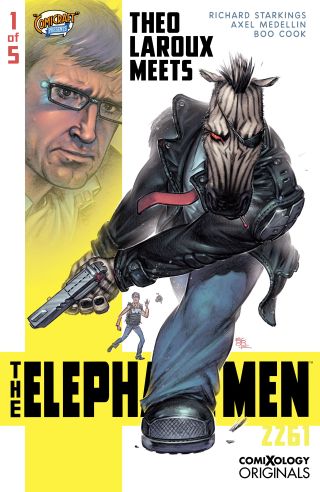
"I’ve always been a big fan of a British TV documentary maker who interviewed the Tiger King long before he became a lockdown sensation, and whose My Scientology Movie is currently available on Netflix," Starkings tells Newsarama, referring to Louis Theroux. "I found myself watching all his documentaries on the BBC iPlayer and started wondering what he would make of the Elephantmen."
So enter Theo Laroux, a new character coming to Los Angeles to talk with some of the most prominent Elephantmen — Trench, Hip Flask, and Obadiah Horn — to document how their effect on human society as a whole.
This new limited series is scheduled to debut July 7 as an exclusive to Amazon's digital comics platform comiXology, and here's our conversation with Starkings about it.
Newsarama: Rich, I'm biased in that I appreciate a journalistic take on something, but what has that angle provided for you as a storyteller in depicting the Elephantmen - and any misconceptions the documentary journalist in this case has about them?

Richard Starkings: It’s always fun to bring in new characters who actually can ask questions that haven’t been asked in the context of the world of the Elephantmen.
Comic deals, prizes and latest news
Get the best comic news, insights, opinions, analysis and more!
Way back in issue #1, I brought my daughter, Savannah, into the story. She was six at the time and full of all the innocent questions that children have at that age. Having her talk to Ebony from her six year old perspective was heartwarming but it also triggered Ebony’s PTSD so we got two perspectives on the same character, her innocent observations and his internal narrative. It’s still one of my favorite issues.
Back in #51, I introduced the character of Jack Farrell, at the insistence of film producer Janet Zucker. I had insisted that an Elephantmen movie did not need a "young male lead" but as soon as I introduced Farrell into the story, I realized I had been wrong. He is a LOT of fun to write and allows Hip Flask to relax and respond to the world around him in a much more grounded and relatable way. I was going to be done with Jack after that storyline but he stuck around and has become very popular with readers.
Nrama: The first issue re-introduces detective Trench for new readers, through the lens of Theo who is meeting him for the first time. From your perspective, what kind of person is Trench?
Starkings: Hopefully, after reading this issue, readers will have a new perspective on Trench.
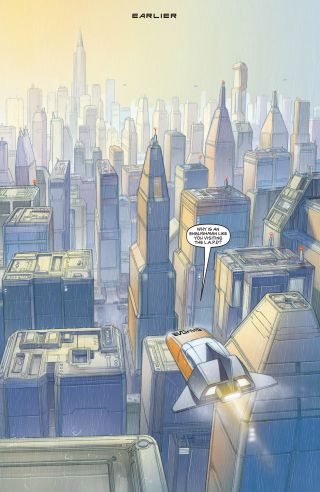
He’s a character that I originally found difficult to write, but I think he really came to life when I handed him over to my friends Mark Schweikert and Shaky Kane for issue #56. Mark is a Lieutenant in the Phoenix Police Department and he put Trench in a situation that would have never occurred to me. When you couple Mark’s take with Trench’s appearance in #76 — written and illustrated by our incredible cover artist and Judge Dredd regular, Boo Cook — you have a much more compassionate, conflicted and well-rounded character who doesn’t need the other Elephantmen around to be interesting.
Nrama: Getting back to the documentary part of this puzzle, what is Theo's angle for his piece?
Starkings: Like the broadcaster Theo is based on, I think Theo is a curious and compassionate narrator who is always looking to get to know his subjects. He wants to tell stories through the characters he meets, which is kind of my own objective actually.
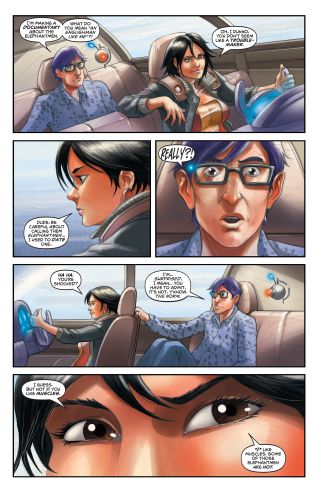
Nrama: With so many decades now in this story, what are you finding new about the Elephantmen yourself?
Starkings: When we brought Elephantmen to comiXology Originals I wanted to challenge myself to tell different stories. Our first season, The Death of Shorty, was a Whodunnit? and introduced Hip and Farrell’s new robot sidekick, Dillon. Our second season was an action/adventure heist with giant robots and this season follows the documentary format. There is an overarching plot developing which becomes clearer each season, but otherwise each season is pretty much a self-contained story.
Nrama: You mentioned coming to comiXology Originals; before then, you were at Image Comics doing it as a long-form ongoing series. How has structuring this as a TV show as opposed to a monthly series affected the storytelling?
Starkings: When I first took Elephantmen to Image, [publisher] Eric Stephenson’s mandate was "Bring it out monthly." The Walking Dead was already a runaway success at that time and Robert Kirkman was delivering every month, so the perceived wisdom was that retailers supported books that came out regularly. So we did our best to deliver a monthly book and did so for the first year.
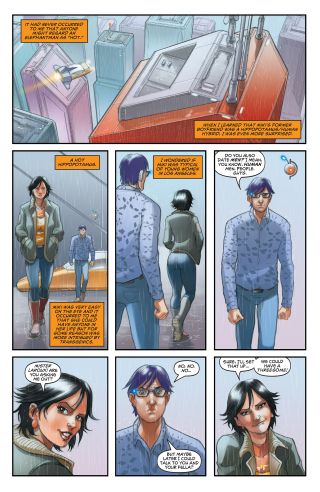
But not long after that, John Layman had a hit with Chew and followed the Hellboy model of five issue story arcs that would then be collected into trades. I think it’s interesting to note that, just 15 years ago, the market for trade paperback collections was still growing.
Looking back now, I wish I had followed the Hellboy model as so many Independent creators do now. Saga, which continues its numbering still worked the five issues on/five issue off model with a two- or three-month gap in-between that allows writer and artist to refuel, plan ahead and keep the title on track. Eight to ten issues a year is a fairly manageable workload for writer and artist, I think. I like to work with artists who produce finished work, from pencils to colors, and I’m well aware that this is a LOT of work.
Since moving to comiXology Originals, I have switched to the five issue model for Elephantmen and six issues for Ask for Mercy.
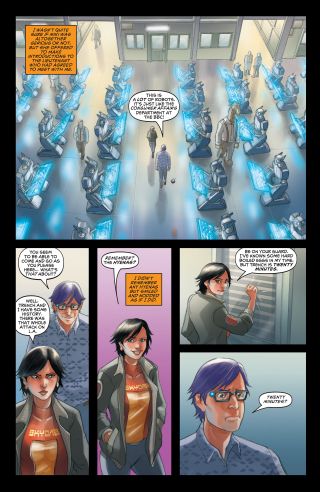
Kirkman told me long ago to limit page counts to 20 pages an issue so that you could get more issues out in a year and he was so right. 20 pages is just the right amount of pages for a monthly and 100/120 pages is just right for a trade paperback collection.
When I’m working on a story, I find that you hit the rhythm and direction of your story toward the end of the second issue, it accelerates in issues 3 and 4 and reaches its inevitable conclusion in 5.
I wouldn’t say it’s affected my storytelling inasmuch as it has allowed me to settle into a comfortable pattern. It also means that Axel can draw every issue which I was trying to establish as far back as issues #51-55. Those issues featured a storyline that was something of a reboot and was based on the movie treatment I’d written for Zucker Productions back when it looked like we had Andy Serkis onboard to direct. Ah, happy days.
Nrama: You mentioned Axel, which brings me to my next question.
Newsarama covered the news when Axel Medellin first joined you on Elephantmen 10 years ago, and time has flown. I believe this is your longest collaboration to date outside of maybe working with John Roshell. What is your relationship with Axel like now, 10 years in?
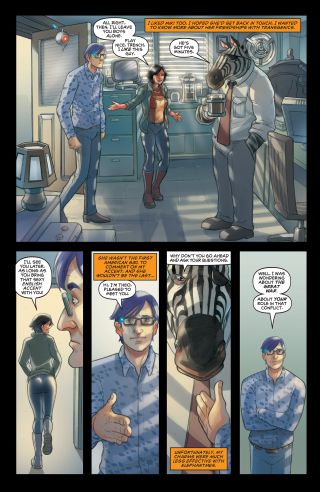
Starkings: [Laughs] You’d have to ask Axel! I think I’m a hard taskmaster but I will say that he can handle pretty much anything I throw at him — vast cityscapes, giant robots, femme fatales and suspicious robots. He’s drawn maybe 50 issues now — well over a thousand pages.
Nrama: Big picture then before we go, what are your goals with the new season of Elephantmen?
Starkings: That would be telling!
We are pulling on a plot thread that dates back to the last few issues of the Image series. Characters from 2261 seasons one and two also have roles in this new story. I’m very happy with the course the story is taking. Action! Adventure and really wild things! There are now over one hundred issues of Elephantmen that are always available on comiXology and I am always hoping to bring new readers in. New readers can step into this storyline alongside Theo without getting lost.
Chris Arrant covered comic book news for Newsarama from 2003 to 2022 (and as editor/senior editor from 2015 to 2022) and has also written for USA Today, Life, Entertainment Weekly, Publisher's Weekly, Marvel Entertainment, TOKYOPOP, AdHouse Books, Cartoon Brew, Bleeding Cool, Comic Shop News, and CBR. He is the author of the book Modern: Masters Cliff Chiang, co-authored Art of Spider-Man Classic, and contributed to Dark Horse/Bedside Press' anthology Pros and (Comic) Cons. He has acted as a judge for the Will Eisner Comic Industry Awards, the Harvey Awards, and the Stan Lee Awards. Chris is a member of the American Library Association's Graphic Novel & Comics Round Table. (He/him)
Most Popular






